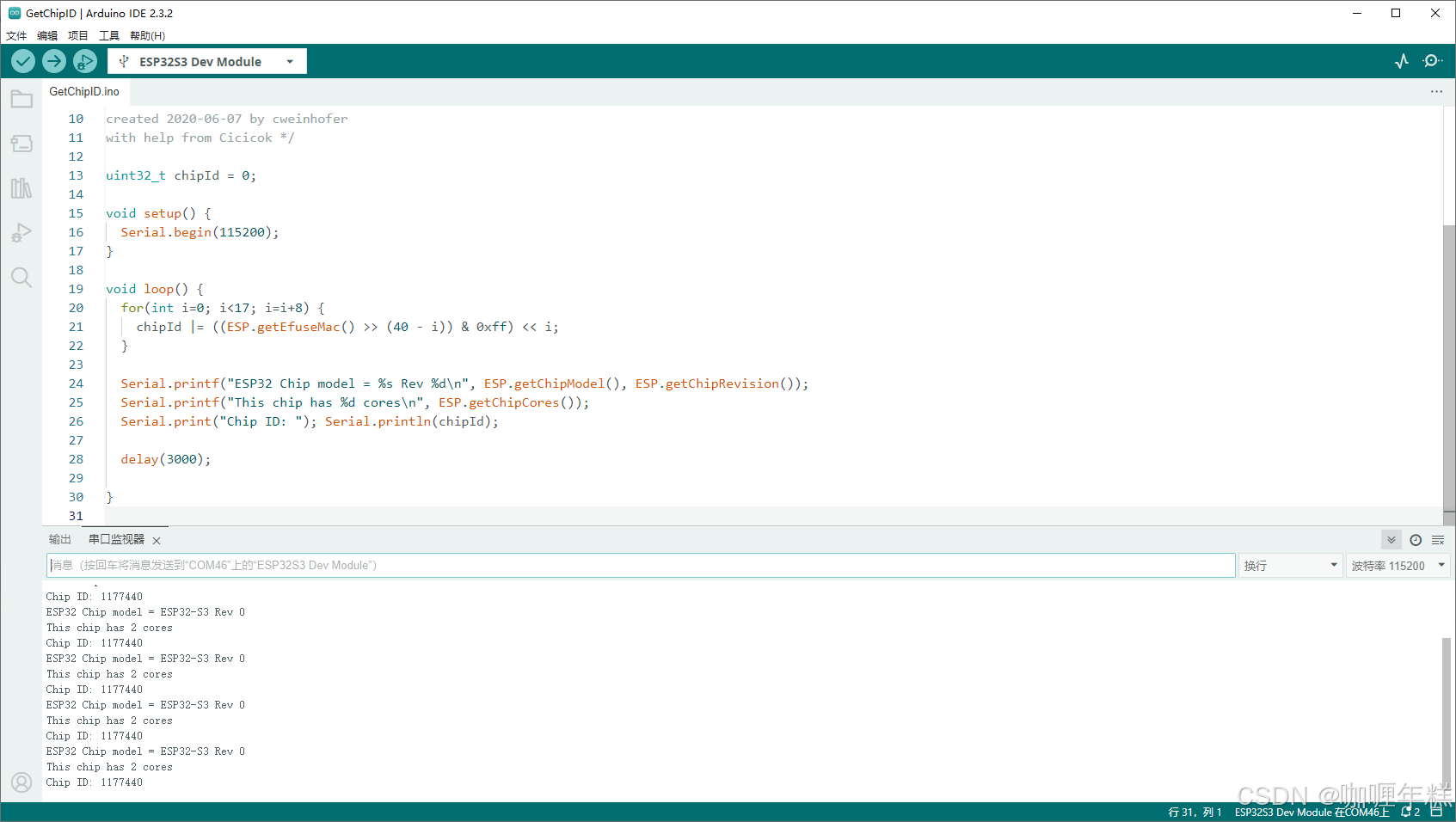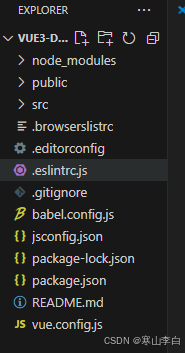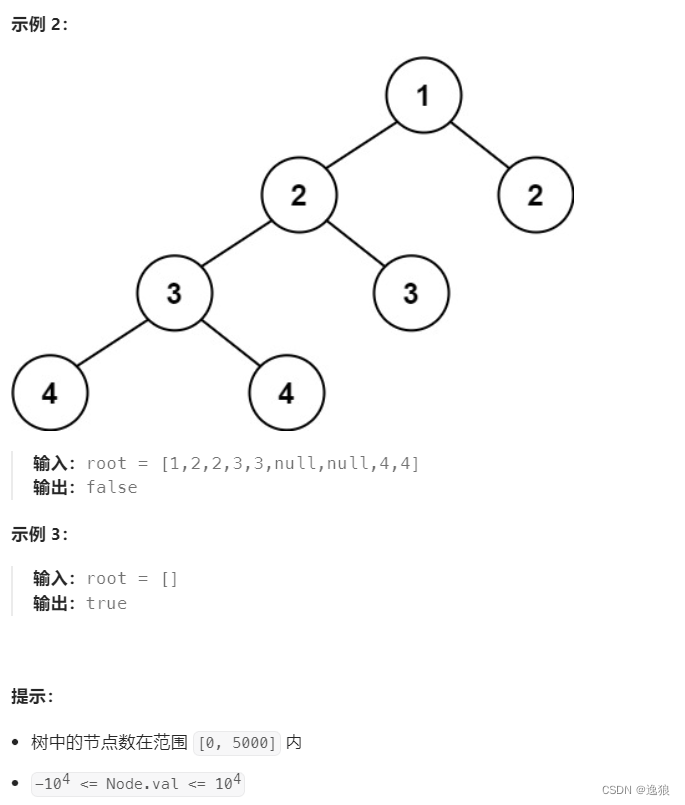前言
在我们的安全框架中,不管是什么框架(包括通过过滤器自定义)都需要处理涉及安全相关的异常,例如:登录失败要跳转到登录页,访问权限不足要返回页面亦或是json。接下来,我们就看看Spring Security是怎么处理异常的!
什么是异常处理
在Spring Security中,特指对于安全异常的处理。
我们知道Spring Security主要是基于过滤器来实现的,因此每个安全过滤器都可能发生安全异常,所以处理逻辑会被散落在各个过滤器中。
Spring自然是不能忍受这种设计,于是就有了专门的安全异常处理。
注:下文我们都用异常处理来代指安全异常处理。
异常处理设计
Spring Security将安全异常分为两类。
-
AuthenticationException —— 认证异常

认证异常 触发原因 描述 BadCredentialsException 无法识别凭证 可能是没有凭证/无法解密/格式不对等 UsernameNotFoundException 没有找到用户 用户名没有对应的账号 SessionAuthenticationException 认证过程中与session相关的校验。例如,控制多点登录时,当某用户多点登录超过规定数量就会发生 session认证异常 AuthenticationServiceException 认证服务遇到无法处理的情况是触发 认证服务异常 ProviderNotFoundException ProviderManager没有配置任何的Provider 没有Provider PreAuthenticatedCredentialsNotFoundException 与第三方认证系统集成时,发现客户端没有传凭证 前认证凭证没有找到 AuthenticationCredentialsNotFoundException 这个主要是鉴权的时候发现没有认证,就会抛出 没有找到认证凭证。 RememberMeAuthenticationException - 主要与记住我功能,恢复登录态有关 NonceExpiredException - 这个主要与Digest认证方式有关 AccountStatusException 校验账号状态时触发 账号状态异常 -
AccessDeniedException —— 访问拒绝异常

访问拒绝异常 触发原因 描述 AuthorizationServiceException 遇到无法处理的鉴权时触发 例如配置错误,数据类型错误 CrsfException 防御Crsf时触发 这里有两个,分别对应WebFlux和WebMvc 其实对于鉴权来说,只要发现权限不满足,都是直接抛出AccessDeniedException的。
认证异常和访问拒绝异常的区别
与访问拒绝异常相比,认证异常要复杂不少。这是由认证过程和认证方式的多样性导致的。
- 认证过程:
一个完整的用户密码认证过程各组件的调用关系和简化
 组件都有不少,更何况要捋清楚调用关系。上面也只能是给大家看看认证过程中需要干啥,有哪些组件负责。
组件都有不少,更何况要捋清楚调用关系。上面也只能是给大家看看认证过程中需要干啥,有哪些组件负责。 - 认证方式:
这个就不多啰嗦,前面说认证过滤器的时候有说过。
异常处理器
| 异常 | 类定义 | 异常处理器 |
|---|---|---|
| 认证异常 | AuthenticationException | AuthenticationFailureHandler |
| 访问异常 | AccessDeniedException | AccessDeniedHandler |
为什么要搞两个异常,还要搞两个组件来处理呢?
- 从安全业务上说,本来就是两种业务,访问跟认证是两个事情。
- 从单一职责原则来说,肯定要进行拆分,因为这两个组件处理的是不同的异常。
- 一般而言,登录异常我们是需要重定向到登录页面的,而接口访问异常则不然,一般通过返回错误拒绝请求。
实际上,这两个组件定义的可以说一模一样:
public interface AuthenticationFailureHandler {void onAuthenticationFailure(HttpServletRequest request, HttpServletResponse response, AuthenticationException authException)throws IOException, ServletException;
}public interface AccessDeniedHandler {void handle(HttpServletRequest request, HttpServletResponse response, AccessDeniedException accessDeniedException)throws IOException, ServletException;
}
除了方法名,和入参的异常不同,其他的都是一样的。甚至,如果我们进一步看看异常的定义的话,连异常定义也是类似的,都是继承于RuntimeException,没有任何其他多余的字段和逻辑。
AuthenticationFailureHandler的实现
| AuthenticationFailureHandler | 描述 |
|---|---|
| AuthenticationEntryPointFailureHandler | 通过AuthenticationEntryPoint组件处理 |
| SimpleUrlAuthenticationFailureHandler | 重定向到指定URL,如果没有指定,则退化返回401 |
| ForwardAuthenticationFailureHandler | 重定向到指定的URL,必须指定URL |
| ExceptionMappingAuthenticationFailureHandler | 通过匹配异常寻找对应的处理器,一般由用户自行配置。 |
| DelegatingAuthenticationFailureHandler | 委托其他的处理器处理 |
这里有一个特殊的,他使用另一个组件AuthenticationEntryPoint进行处理。
AuthenticationEntryPoint
-
Http403ForbiddenEntryPoint
他是处理登录异常的通用的可选方案,通常是AbstractPreAuthenticatedProcessingFilter(基于外部认证服务器进行认证)。核心逻辑:总是返回403。
这个实现是用来兜底的,如果找不到其他的,那就会用他。 -
HttpStatusEntryPoint
他是一种可选方案,直接返回一个用户指定的http状态,response.setStatus(this.httpStatus.value())。 -
LoginUrlAuthenticationEntryPoint
如果我们使用的是UsernamePasswordAuthenticationFilter,那么默认使用的就是这个。其核心逻辑也比较简单明了,就是重定向到登录页面。如果我们往上一层对比到SimpleUrlAuthenticationFailureHandler 、ForwardAuthenticationFailureHandler ,他的区别在于如果我们指定了loginPage,那么就会使用他。他会自动识别是绝对地址还是相对地址进行拼接。 -
DigestAuthenticationEntryPoint
显然,他是为DigestAuthenticationFilter服务的。他会设置一些与Digest相关的请求头,然后调用response.sendError方法处理。 -
BasicAuthenticationEntryPoint
为BasicAuthenticationFilter服务。核心逻辑与Digest类似,也是设置相关请求头,通过response.sendError方法处理。 -
DelegatingAuthenticationEntryPoint
委托。没有自己的逻辑,而是交给别的AuthenticationEntryPoint。
AccessDeniedHandler的实现
- AccessDeniedHandlerImpl
基础实现,也是默认实现。设置HTTP错误码-403,并转发到错误页面。 - InvalidSessionAccessDeniedHandler
显然是为了处理session失效异常的。不过有趣的是,官方在CsrfConfigurer中引入这个。并且是为了处理MissingCsrfTokenException的。并且为了单一职责,还构建了下面的委托处理器。 - DelegatingAccessDeniedHandler
委托处理器。他管理着哪些异常对应哪个处理器,并将当前异常的处理交付给对应的处理器处理。故而得名“委托”处理器,算是个代理人吧。当然,他要求必须有个兜底的默认处理器。 - RequestMatcherDelegatingAccessDeniedHandler
他也是委托处理器,不同点在于,他是RequestMatcherDelegating,也即基于RequestMatcher进行Request匹配处理器。 - ObservationMarkingAccessDeniedHandler
他是用来统计数据的,观察标记。 - CompositeAccessDeniedHandler
组合模式的实现,用来管理多个处理器。目前看的话,主要是为了统计服务,因为他会调用每一个处理器,这可能会出现问题。只有统计这个处理器,需要其他的处理器来实现真正的处理,需要配合。
到这里问一句,这里我们看到了几种设计模式?策略模式、委托模式、组合模式。可以看到Spring对于代码的追求,这也是我们阅读源码的目的之一,学习好的设计。而这背后都是设计原则。
异常处理原理
前面我们大概了解了异常处理的来龙去脉,知道了其核心组件。现在我们来深入了解其原理。
认证异常处理原理
要理解这个,就必须回顾一下认证流程(这里以默认的用户密码登录为例):
AbstractAuthenticationProcessingFilter#doFilter
> UsernamePasswordAuthenticationFilter#attemptAuthentication
|-> ProviderManager#authenticate
|-|-> AbstractUserDetailsAuthenticationProvider#authenticate
|-|-|->DaoAuthenticationProvider#retrieveUser
|-|-|-|->JdbcDaoImpl#loadUserByUsername
|-|-|->DaoAuthenticationProvider#additionalAuthenticationChecks
|-|-|->DaoAuthenticationProvider#createSuccessAuthentication
|-|-|->AbstractUserDetailsAuthenticationProvider#createSuccessAuthentication
// 同层级的表示顺序调用,不同层级的:上层方法调用下层方法,是递进关系。层级减少表示方法返回
负责处理认证请求的AbstractAuthenticationProcessingFilter#doFilter方法中会捕获异常,并交给unsuccessfulAuthentication方法处理。
public abstract class AbstractAuthenticationProcessingFilter extends GenericFilterBeanimplements ApplicationEventPublisherAware, MessageSourceAware {protected void unsuccessfulAuthentication(HttpServletRequest request, HttpServletResponse response,AuthenticationException failed) throws IOException, ServletException {// 1. 清空安全上下文this.securityContextHolderStrategy.clearContext();// 2. 记住我功能,清空cookie,认证失败的处理this.rememberMeServices.loginFail(request, response);// 3. 通过认证失败处理处理this.failureHandler.onAuthenticationFailure(request, response, failed);}
}
默认情况下,会使用SimpleUrlAuthenticationFailureHandler重定向到登录页面。
什么?怎么知道是这个处理器?行吧,我们来看看FormLoginConfigurer的源码吧。
public final class FormLoginConfigurer<H extends HttpSecurityBuilder<H>> extendsAbstractAuthenticationFilterConfigurer<H, FormLoginConfigurer<H>, UsernamePasswordAuthenticationFilter> {public FormLoginConfigurer() {// 调用父类构造器super(new UsernamePasswordAuthenticationFilter(), null);usernameParameter("username");passwordParameter("password");}/*** 在配置过目标过滤器之前,会先调用这个方法进行Configurer的初始化*/@Overridepublic void init(H http) throws Exception {// 初始化父类super.init(http);// 初始化默认的登录页面initDefaultLoginFilter(http);}
}public abstract class AbstractAuthenticationFilterConfigurer<B extends HttpSecurityBuilder<B>, T extends AbstractAuthenticationFilterConfigurer<B, T, F>, F extends AbstractAuthenticationProcessingFilter>extends AbstractHttpConfigurer<T, B> {protected AbstractAuthenticationFilterConfigurer(F authenticationFilter, String defaultLoginProcessingUrl) {// 调用另一个构造器this();this.authFilter = authenticationFilter;if (defaultLoginProcessingUrl != null) {// 由于FormLoginConfigurer的构造器中传的是null,因此不会走到这// 当然,由于这个方法是public,因此也可以在配置时被我们调用// 他无非就是指定什么地址是认证请求罢了loginProcessingUrl(defaultLoginProcessingUrl);}}protected AbstractAuthenticationFilterConfigurer() {// 构造器中设置登录页面urisetLoginPage("/login");}private void setLoginPage(String loginPage) {this.loginPage = loginPage;// 指定AuthenticationEntryPoint,后面异常处理过滤器用的是这个来处理没有登录的异常。this.authenticationEntryPoint = new LoginUrlAuthenticationEntryPoint(loginPage);}@Overridepublic void init(B http) throws Exception {// 更新/初始化认证相关的默认组件updateAuthenticationDefaults();// 更新访问权限-认证页面、认证请求、认证失败updateAccessDefaults(http);// 注册默认的AuthenticationEntryPointregisterDefaultAuthenticationEntryPoint(http);}protected final void updateAuthenticationDefaults() {if (this.loginProcessingUrl == null) {loginProcessingUrl(this.loginPage);}if (this.failureHandler == null) {// 指定默认的异常跳转页面failureUrl(this.loginPage + "?error");}LogoutConfigurer<B> logoutConfigurer = getBuilder().getConfigurer(LogoutConfigurer.class);if (logoutConfigurer != null && !logoutConfigurer.isCustomLogoutSuccess()) {logoutConfigurer.logoutSuccessUrl(this.loginPage + "?logout");}}public final T failureUrl(String authenticationFailureUrl) {// 就是这个啦T result = failureHandler(new SimpleUrlAuthenticationFailureHandler(authenticationFailureUrl));this.failureUrl = authenticationFailureUrl;return result;}protected final void registerAuthenticationEntryPoint(B http, AuthenticationEntryPoint authenticationEntryPoint) {// 所谓注册就是注册到异常处理过滤器上// 思考个问题:下面这种处理方式不就耦合ExceptionHandlingConfigurer了吗?// 为什么不是像其他的sharedObject那样,直接放到HttpSecurityd#sharedObjects中,在ExceptionHandlingConfigurer再自行获取设置。// 答:如果这样的话,会导致BUG。init方法是在执行了用户配置方法之后在HttpSecurity构建过滤器链的时候调用的。有可能将用户配置的覆盖了。ExceptionHandlingConfigurer<B> exceptionHandling = http.getConfigurer(ExceptionHandlingConfigurer.class);if (exceptionHandling == null) {return;}exceptionHandling.defaultAuthenticationEntryPointFor(postProcess(authenticationEntryPoint),getAuthenticationEntryPointMatcher(http));}
}
从FormLoginConfigurer出发,我们知道UsernamePasswordAuthenticationFilter使用的是SimpleUrlAuthenticationFailureHandler,同时ExceptionTranslationFilter使用的是LoginUrlAuthenticationEntryPoint。但这个设计我没有很理解,个人觉得应该在顶层都使用AuthenticationFailureHandler才合理。不知道是不是为了区分场景。
- 场景一:登录处理时发生的异常,直接被捕获处理了。
- 场景二:是鉴权时发现没有任何凭证,由异常处理过滤器处理。
但SimpleUrlAuthenticationFailureHandler、LoginUrlAuthenticationEntryPoint,内部处理没有太大区别,都是为了跳转到登录页面。
访问拒绝异常处理原理
鉴权相关的,之前我们聊过,忘记的同学可以通过下面的链接再回忆复习一下。可能文章的题目可能说的权限配置,但同时也从原理上给大家分析了如何鉴权的。也正是因为有两种方式,所以没有单独写鉴权过滤器。因为基于HttpRequest的配置方式的鉴权原理是通过AuthorizationFilter,也就是过滤器实现的。而另一种权限配置方式-基于方法配置权限-则是通过AOP实现的。
- Spring Security之基于方法配置权限
- Spring Security之基于HttpRequest配置权限
ExceptionTranslationFilter
他主要负责处理的是鉴权过程中发生的异常。这里就包括用户权限不足的AccessDeniedException,以及鉴权时发现用户还没有登录而抛出的认证异常。
public class AuthorizationFilter extends GenericFilterBean {private Authentication getAuthentication() {Authentication authentication = this.securityContextHolderStrategy.getContext().getAuthentication();if (authentication == null) {throw new AuthenticationCredentialsNotFoundException("An Authentication object was not found in the SecurityContext");}return authentication;}
}
public class ExceptionTranslationFilter extends GenericFilterBean implements MessageSourceAware {private void doFilter(HttpServletRequest request, HttpServletResponse response, FilterChain chain)throws IOException, ServletException {try {chain.doFilter(request, response);}catch (IOException ex) {throw ex;}catch (Exception ex) {// 尝试从异常堆栈中找到安全异常Throwable[] causeChain = this.throwableAnalyzer.determineCauseChain(ex);RuntimeException securityException = (AuthenticationException) this.throwableAnalyzer.getFirstThrowableOfType(AuthenticationException.class, causeChain);if (securityException == null) {securityException = (AccessDeniedException) this.throwableAnalyzer.getFirstThrowableOfType(AccessDeniedException.class, causeChain);}if (securityException == null) {// 不是安全异常,直接重新抛出rethrow(ex);}if (response.isCommitted()) {// 如果response已经提交,则抛出servlet异常throw new ServletException("Unable to handle the Spring Security Exception "+ "because the response is already committed.", ex);}// 处理安全异常handleSpringSecurityException(request, response, chain, securityException);}}private void handleSpringSecurityException(HttpServletRequest request, HttpServletResponse response,FilterChain chain, RuntimeException exception) throws IOException, ServletException {if (exception instanceof AuthenticationException) {// 处理认证异常handleAuthenticationException(request, response, chain, (AuthenticationException) exception);}else if (exception instanceof AccessDeniedException) {// 处理访问异常handleAccessDeniedException(request, response, chain, (AccessDeniedException) exception);}}private void handleAuthenticationException(HttpServletRequest request, HttpServletResponse response,FilterChain chain, AuthenticationException exception) throws ServletException, IOException {// 这里是转换方法名,是一种代码追求、也是一种代码的自解释:对于上层方法的作用是处理认证异常,而处理认证异常的手段是发送开始认证(其实就是跳转到登录页面开始登录流程),因为走到这的都是鉴权时不存在凭证导致的认证异常。sendStartAuthentication(request, response, chain, exception);}private void handleAccessDeniedException(HttpServletRequest request, HttpServletResponse response,FilterChain chain, AccessDeniedException exception) throws ServletException, IOException {Authentication authentication = this.securityContextHolderStrategy.getContext().getAuthentication();boolean isAnonymous = this.authenticationTrustResolver.isAnonymous(authentication);if (isAnonymous || this.authenticationTrustResolver.isRememberMe(authentication)) {// 对于匿名用户或者不是记住我用户,直接跳转登录页开始登录流程sendStartAuthentication(request, response, chain,new InsufficientAuthenticationException(this.messages.getMessage("ExceptionTranslationFilter.insufficientAuthentication","Full authentication is required to access this resource")));}else {// 正常用户则通过AccessDeniedHandler处理this.accessDeniedHandler.handle(request, response, exception);}}protected void sendStartAuthentication(HttpServletRequest request, HttpServletResponse response, FilterChain chain,AuthenticationException reason) throws ServletException, IOException {// SEC-112: Clear the SecurityContextHolder's Authentication, as the// existing Authentication is no longer considered validSecurityContext context = this.securityContextHolderStrategy.createEmptyContext();// 清空安全上下文 this.securityContextHolderStrategy.setContext(context);// 记录当前权限不足的请求,登录成功后可能需要自动跳转this.requestCache.saveRequest(request, response);// 通过AuthenticationEntryPoint处理,这里是跳转到登录页面this.authenticationEntryPoint.commence(request, response, reason);}
}
总结
- 异常处理体系包括
异常定义分两类 —— 认证异常、访问拒绝异常(鉴权异常)
异常处理器 —— AuthenticationFailureHandler、AccessDeniedHandler分别对应异常分类
异常的处理 —— 认证过滤器和异常处理器 - 认证异常的处理一般是跳转到登录页面。
访问异常的处理默认则是AccessDeniedHandlerImpl处理,发送403错误码或者跳转到错误页。
后记
前阵子搬家,一直在适应新屋子的生活节奏,拖了不少时间,对不住了各位。后面应该会回复正常。
至此,咱们聊了认证、鉴权、session、异常处理,接下来咱们聊聊认证过程中一些小的功能点,例如:登录后跳转到之前异常的请求、RemenberMe、多处登录控制。



















